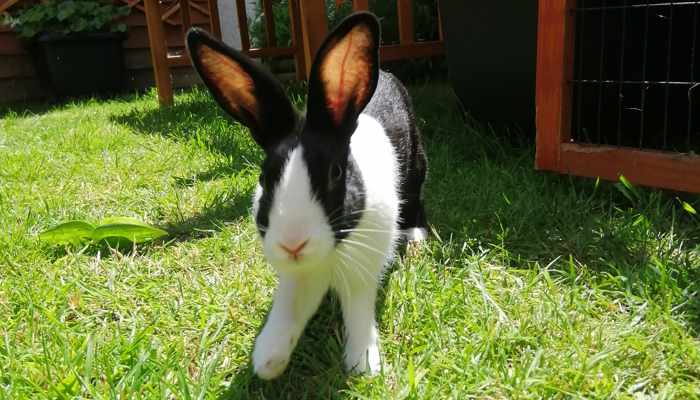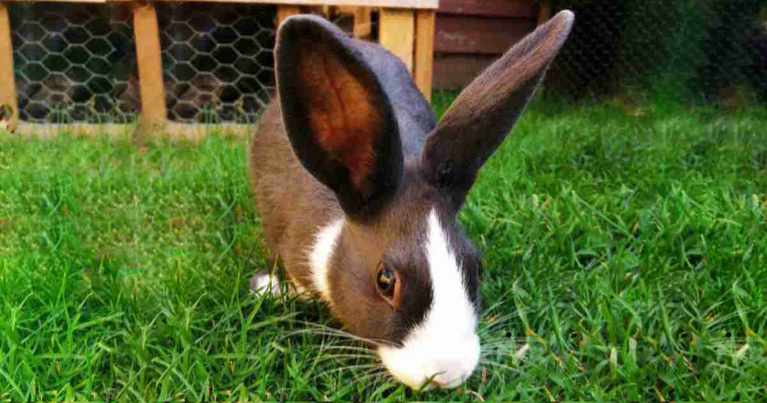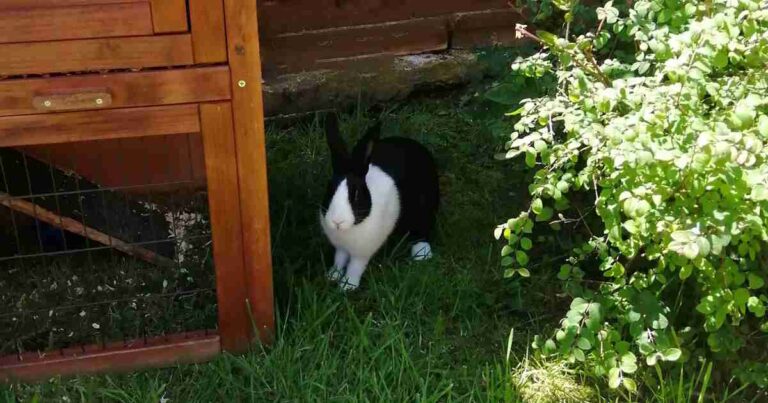introduction
Neutering rabbits never crossed my mind when I bought Babe or during the brief time she had been with me. She kept me too busy to think about anything more than protecting her and my garden. But that was about to change, thanks to a vet.
Table of Contents
Babes free health check.
Babe came with a voucher to see the vet for a health check and vaccination against myxomatosis and RHD1. Now, I never miss a freebie and have witnessed the suffering myxomatosis causes in wild rabbits. So, I booked my pet rabbit in with the vet before taking her home, not knowing exactly what RHD is. But, Rabbit Haemorrhagic Disease is a viral form of hepatitis that comes in two strains. Both of which are highly infectious and fatal.
Myxomatosis and RHD-1 Vacination
So, a week after leaving the shop. Babe found herself back in the pet shop, but this time upstairs in the vet’s surgery. After a brief wait among the various breeds of cats and dogs, it was our turn to see the vet. A short, middle-aged woman with a blunt manner. Babe had her weight, teeth, and eyes checked, followed by the combined myxomatosis and RHD1 vaccination. Now the vet informed me that pet rabbits still needed protection from RHD2. So, we would have to return in two or three weeks.
Now friends, say the look on my face speaks volumes, just before my mouth speaks my mind. To my mind, I they should provide that information while making the appointment. However, before I could open my mouth, the vet hurriedly explained. Strains one and two vaccines are incompatible and need administering separately. Then, without taking a breath, said she would also have to be neutered at six months old. As if I had no choice! I left the consulting room with a bleeding tongue, made an appointment for the RHD 2 vaccination, and left.

Now, if necessary, I am not against neutering rabbits, but Babe was alone. She had only been with me for two weeks. And I currently had no intention of getting her a partner. The garden was escape-proof, and Babe had my complete attention while she was running around in it. So, if she did get pregnant, it would have to be an immaculate conception. When I finally cooled down, I put it down to the vet’s unfortunate manner and let it rest.
RHD-2 vaccination
Babe was back at the vet’s two weeks later, for her RHD2 vaccination. She had her weight rechecked without a problem. But while the vet was giving her the vaccine pulled away. The vet then roughly grabbed and pinned her down to finish the injection. When she should have simply asked me to hold her in the first place. That was enough! Two visits, both of which left me unhappy with the vet’s conduct. Her blunt manner I Could probably tolerate, but unnecessary rough handling of a timid pet I would not. Time to find a new vet!
neutering rabbits-The vet’s.
The vet’s I considered most experience in neutering rabbits is part of the pet shop chain where I bought Babe. So, they would be the best, and there was another one four miles away. But I would need to check it out and see if the staff moved between the two branches. I went to see them, and the staff were pleasantly helpful, and assured me that each practice was independent.
Then took me through the procedure and aftercare that my pet rabbit would need. After that, I made an appointment for Babe to have a pre-op check, confident she would be in safe hands. Five days later, a pleasant, softly spoken young male vet. Who thought would neuter Babe gave her the all-clear. So I could book her in, but I still held back. There are risks.
My primary concern is the slim chance the anaesthetic they use while neutering rabbits may kill her. I knew it was irrational to think this way. I had had dogs spayed, horses gelded, and they were all put at risk without a second thought. So, how was neutering rabbit Babe any different? Later that week, I passed the vet’s and forced myself to make the appointment for Babe’s operation. However, I needed to go through the pet shop to access the vet. Yep, right past the new pet rabbits, and I could not resist having a quick peek.
The arrival of Bob
There were plenty of new pet rabbits to choose from, unlike when Babe found me. Lops and lion heads in various colours, but only one male standard Dutch. While, all the other new pet rabbits in the run were in a huddle. This small grey and white standard Dutch was on his own in the back corner. I liked him; he would make an excellent partner for Babe! But it was too soon; I will have to think it over, walked through the shop into the vet’s surgery.
But, the reception was busy, so I had decided by the time it was my turn. I just needed to know when Babe would have her operation. My turn came, and the receptionist book Babe in, so now we now had six days to wait. Then a further seven to ten days for Babe to recover. I went back through the pet shop and left with a grey and white Dutch rabbit now named Bob.

However, Babe and Bob had to live apart for at least sixteen days. So, Bob had the vacant rabbit hutch, while Babe lived indoors with me. With, only one at a time allowed in the garden. However, when Babe went to the vet’s, Bob would have the garden all to himself: Until Babe had fully recovered. The only problem I had was getting Bob back into the rabbit hutch. But on the plus side, they were going through the first stage of bonding.
Neutering Rabbits - Babe’s Operation.
The following week, Babe went in for her operation; while at home, I prepared for her aftercare. I removed the feeding shelf and ramp from the cage and replaced the wood shaving bedding with a Vets Bed. Next, I cleaned the litter tray, but the food and water bowls were already clean! Then I sat worrying, waiting for the phone call letting me know she had come round and taken some food.
Now, I had taken Babe in at nine o’clock that morning. But the phone call to collect her did not come till late afternoon. So, feeling relieved, I set off to collect her, expecting to see a bald patch and stitches in her side. But when I went into the consulting room, the only visible damage was a bandage on one of Babe’s ears. The vet told me the operation had gone well, and she had her ovaries, uterus, and fallopian tubes taken away.
Babe had eaten and had a pain-killing injection. Then she removed the bandage, revealing a bald ear with a puncture wound. I assume I had that look on my face again. Because the vet hurriedly explained that the best place to put the canular necessary for the operation. Is in a rabbit’s ear. So after the vet instructed me to keep her quiet and not let her stretch, run, or jump. I left with Babe in the pet carrier and an oral pain killer. Only stopping on my way out to arrange the first of the three post operation checks.
neutering rabbits - Post Operation Care
At home, a very drugged Babe went into the cage with none of her usual resistance. Where she slept, hardly moving for the next six hours. Babe finally stirred around eleven pm. Went to her water bowl for an exceptionally long drink, nibbled on some hay, and drank again. Ten minutes later, she went back to the fodder for a proper munch. Now she was eating and drinking, and I could finally get to bed.
The following day I found Babe back to her old self, looking to come out of the cage. But she had no chance; she should be in there at the very least until her first post-operation check. Now Babe needed her first dose of pain relief, and this was a first for me. How do I get ten ml of liquid down a rabbit? It’s a syringe in the side of the mouth and squirt in dogs and horses, but a rabbit? Well, it might be worth a try!
I opened the cage and was about to get hold of Babe when she started licking the syringe. So, I slowly squeezed the full dose out as she took it off the tip. So, it was that easy, and another lesson learnt courtesy of my pet rabbit.
Babe gets her way
Unlike “conveyor belt Bob”, who sits munching a hay cookie on my carpet. While discharging an equal amount of poo from the other end. Babe is exceptionally clean and always uses the litter tray. So, with only her toilet to clean, I had no problem keeping an unhappy Babe behind bars that day. But the following morning, the day of her first post-operation check. I awoke to find she had raked the content of the litter tray all over the cage.
There is no way I could keep her in the cage and clean it. I had to replace the vet’s bed, and I needed to empty the cage. So, after giving her the pain relief, I let her escape. She sat and watched me sort out the mess, and I knew she would not go back in. Think pet rabbits are stupid? You had better think again!
Post operation checks
That afternoon Babe had the first of three post-operation checks. Her stitches were still in place, and there was no sign of infection. She spent the next three days quietly in the lounge. With, the side tables on the lounge chairs to stop her from jumping onto them. The second check by a young veterinary nurse found the wound had knitted, so the danger of infection had passed. But jumping and running were still out of the question. Because the internal damage neutering doe rabbits causes, needed more time to mend.
During the following five days, with less chance of infection. I gave Babe, who had been missing the grass, limited access to the garden. She spent this time quietly grazing and sitting in the fresh air. At her third inspection, she got the all-clear, and the young nurse said she could return to the garden. I did not tell her she had been in the garden already. But just thanked her and left. So, Babe had her normal everyday life back.
conclusion
My pet rabbit Babe had bounced back from the operation that could have killed her. There are risks besides the anaesthetic, but with proper aftercare, these are minimal. Make sure your rabbit eats after the operation and continues to do so. If it is not, take it back to the vet. Over twenty-four hours without food could be fatal. It would be best if you did not let your pet rabbit jump, run, or stretch.
Please keep it in a small area with nothing to jump on. Check the stitches are in place and there is no infection at least once a day. If they have broken stitches or the wound is weeping, take them back to the vet. Besides that, give your pet rabbit plenty of love and sympathy; it is going through a life-threatening ordeal!

